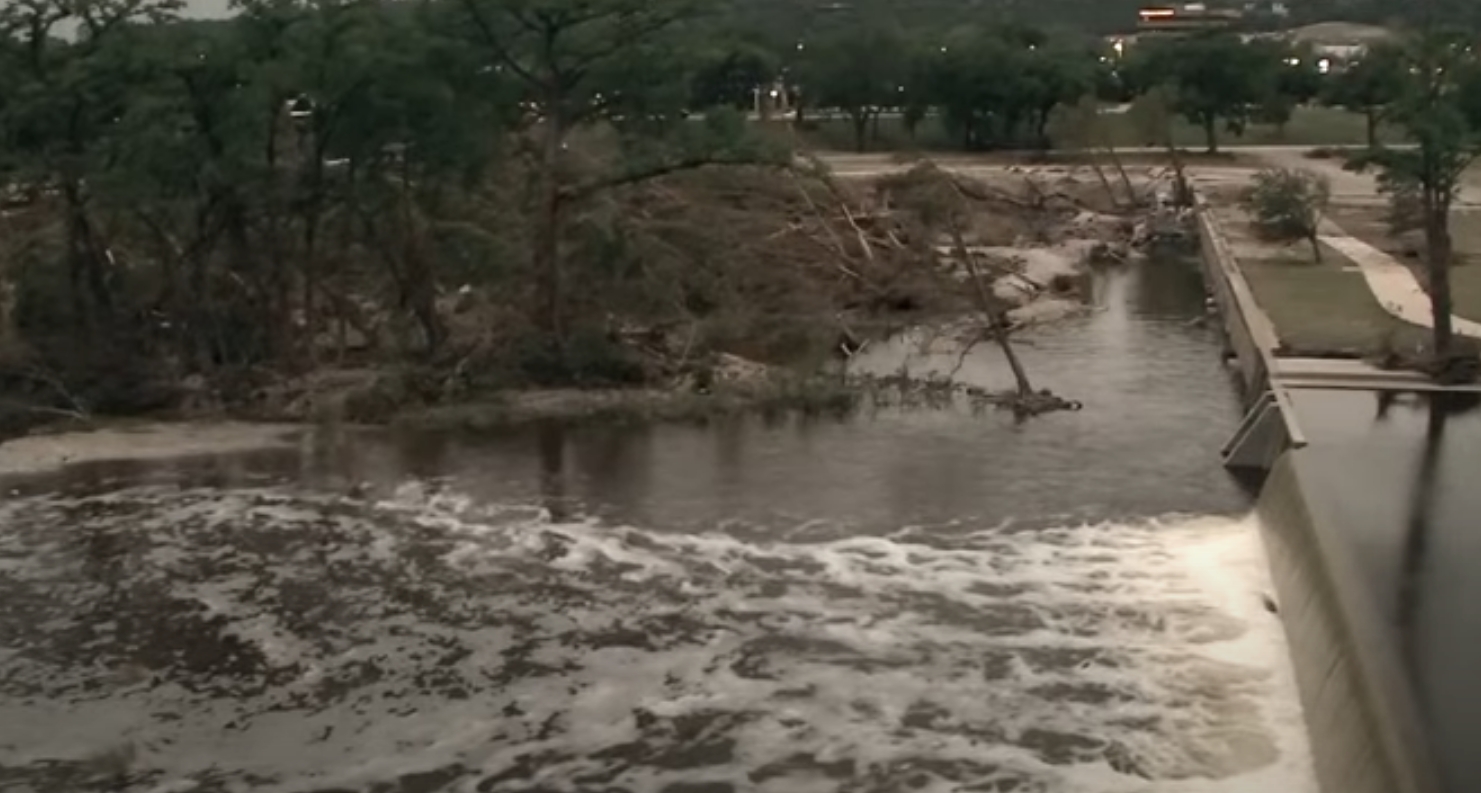A State Underwater
In early July 2025, parts of Central Texas, especially Kerr County and surrounding Hill Country communities, were ravaged by historic flooding that left entire towns submerged, families shattered, and infrastructure devastated. What began as a holiday weekend quickly turned into a full-blown catastrophe, as remnants of Tropical Storm Barry collided with a persistent low-pressure system, dumping unprecedented amounts of rain across an already flood-prone region.
This disaster has since become the deadliest inland flooding event in the United States in nearly 50 years, claiming the lives of at least 129 people, with more than 170 still missing. The catastrophic loss of life—many of them children—has raised urgent questions about infrastructure, climate resilience, and emergency preparedness.
What Happened: A Perfect Storm
The Meteorology Behind the Deluge
Between July 3 and July 7, 2025, a mesoscale convective vortex—powered by moist air from Tropical Storm Barry—parked over the Texas Hill Country. Rainfall reached an unimaginable 20.33 inches (516 mm) in some parts of Kerr County, particularly near Hunt and Ingram.
The Guadalupe River, normally a serene feature of Texas summer recreation, became a deadly force. In Hunt, it rose 29 feet in less than an hour, cresting at 37.5 feet, surpassing the previous 1932 record. Homes were washed away, entire camps were submerged, and rivers turned into walls of water.
Flash Flood Alley
The Texas Hill Country is part of a region infamously known as Flash Flood Alley due to its steep terrain, thin soil layers, and rapid runoff characteristics. In this landscape, water flows faster than most alert systems can notify residents—making flash floods not only dangerous, but often deadly.
Human Toll: Lives Lost and Families Torn Apart
Confirmed Deaths
- Total confirmed fatalities: At least 129 statewide.
- Kerr County alone: 103 deaths, including 36 children and 67 adults.
- Other impacted counties: Travis, Burnet, Kendall, Williamson, and Tom Green.
Camp Mystic Tragedy
One of the most gut-wrenching incidents occurred at Camp Mystic, a Christian girls’ summer camp along the Guadalupe River. As waters rose in the pre-dawn hours of July 4, campers were trapped in their cabins. At least 27 campers and counselors died. Many bodies were found miles downstream; six remain missing.
Ongoing Search for the Missing
More than 170 individuals are still unaccounted for, sparking massive search-and-rescue operations with boats, helicopters, drones, and volunteer foot patrols combing the rivers, woods, and ravines.
Emergency Response: Heroism Amid Horror
Despite infrastructure limitations, emergency crews and volunteers launched a swift and extensive response:
- Over 850 people rescued in total.
- Coast Guard swimmer “Fooch” alone helped save 165 people using nothing but a life vest.
- Over 2,000 rescuers, including units from Mexico, deployed across affected zones.
- State and federal disaster declarations were issued for six counties, enabling FEMA deployment.
Nonetheless, many survivors described delays in evacuation alerts and confusing or nonexistent warning systems. In Kerr County, officials failed to activate the Integrated Public Alert & Warning System (IPAWS), despite having tested it in the past.
Infrastructure Failures and Political Backlash
Public outrage has focused on the failure of local officials to implement flood warning systems, despite multiple prior opportunities:
- Kerr County rejected proposals to install sirens and expand mobile alerts.
- FEMA’s flood maps excluded large sections of camps and housing, reducing oversight and preparation.
- The National Weather Service (NWS) faced staffing shortages due to recent federal budget cuts, limiting early alert capacity.
These failures are now under congressional scrutiny, with House and Senate Democrats launching investigations into FEMA policy, floodplain exclusions, and federal readiness under extreme weather scenarios.
Economic and Historical Significance
- Estimated property damage: $18–22 billion.
- More than 3,200 homes destroyed or rendered uninhabitable.
- Deadliest inland flooding in the U.S. since the 1976 Big Thompson Canyon flood in Colorado.
- The floods surpass the death tolls of Hurricane Helene (2024) and match the economic cost of Winter Storm Uri (2021).
Climate Change: A Silent Force Behind the Storm
Climate scientists have been unequivocal: warming temperatures intensify rainfall. A hotter atmosphere holds more moisture, and when storm systems stall—as Barry’s remnants did—rain falls harder, faster, and longer.
Texas has seen a 37% increase in heavy rainfall events over the past two decades. Experts now call for a comprehensive strategy that includes:
- Climate-resilient building codes.
- Widespread mobile and siren alert systems.
- Regular updates to floodplain maps.
- Reinvestment in the National Weather Service.
Community Response and Relief
Nonprofits, local businesses, and national organizations have poured into the region with aid:
- H-E-B: Deployed mobile kitchens, food trucks, and donated millions.
- World Central Kitchen, Mercy Chefs, Samaritan’s Purse: Feeding thousands daily.
- Local breweries and restaurants: Coordinated donation drives and housed displaced families.
- Operation Airdrop: Airlifting essential supplies to inaccessible areas.
What Comes Next
Search and Recovery
Efforts to recover missing persons continue. Rivers are being dragged, and drones equipped with infrared technology are helping pinpoint possible survivors or remains.
Federal Oversight
Congress will hold hearings on FEMA’s flood mapping policies, funding for NWS, and county-level emergency protocols.
Long-Term Resilience
- Flood-control infrastructure upgrades.
- Climate adaptation legislation.
- Federal and state funds allocated for rebuilding and trauma recovery.
Conclusion: A Watershed Moment for Texas
The 2025 Central Texas floods are more than a natural disaster—they are a call to action. Families have been devastated, children lost, and entire communities broken. Yet through the sorrow, stories of courage and unity have emerged. The question now is whether Texas—and the nation—will finally take decisive steps to prepare for a future in which extreme weather is no longer rare, but routine.
This disaster has exposed not just vulnerabilities in infrastructure, but in foresight and political will. Lives can no longer depend on luck or heroism alone. With the right investment, policy change, and awareness, we can ensure that a tragedy of this scale never happens again.
References
- Wikipedia: July 2025 Central Texas Floods
- CBS News – Search Continues in Kerr County
- AP News – 170 Still Missing
- TIME Magazine – Climate Lessons from Texas Floods
- Houston Chronicle – Damage Estimates
- Statesman – Trump Visits Kerrville
- The Guardian – Rain Forecast Continues
- People – Family Stories of Loss
- Independent – FEMA Floodplain Issues

By: Donte nelson


